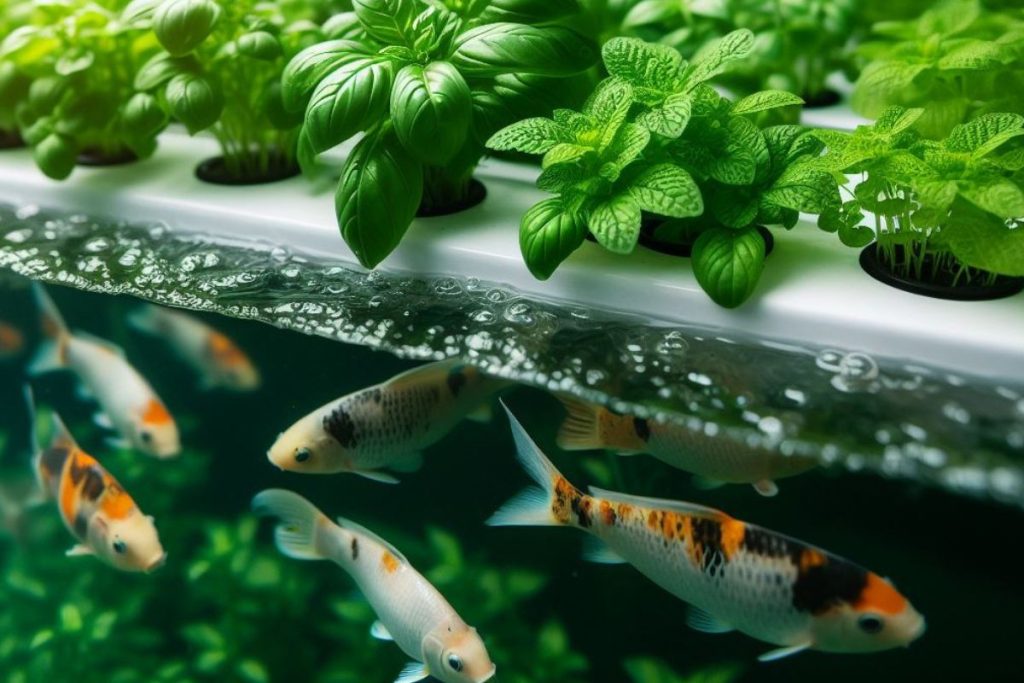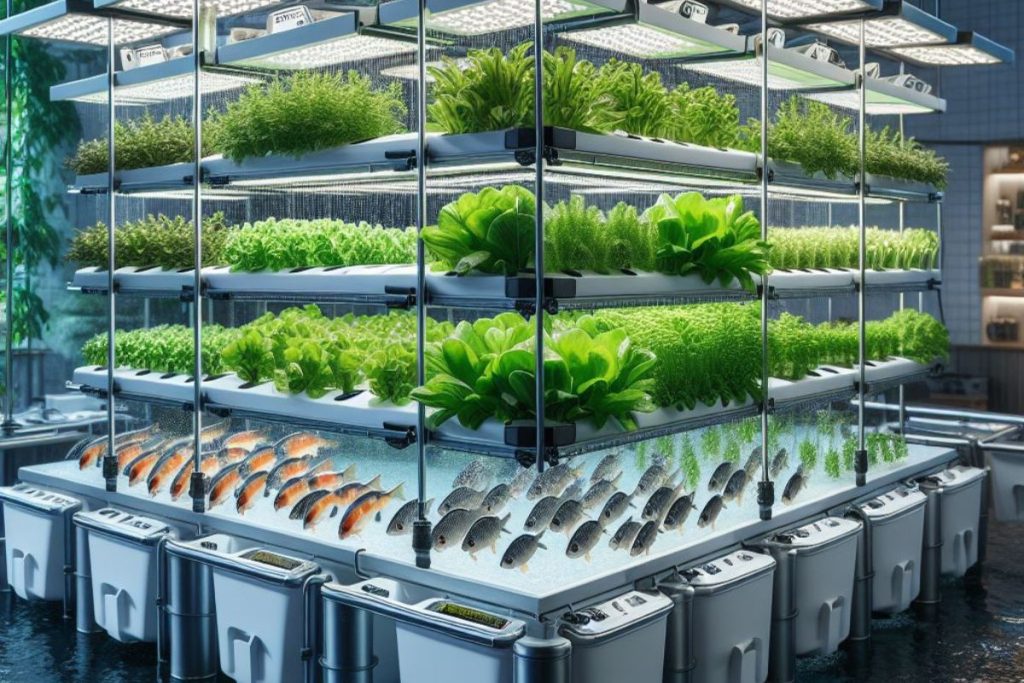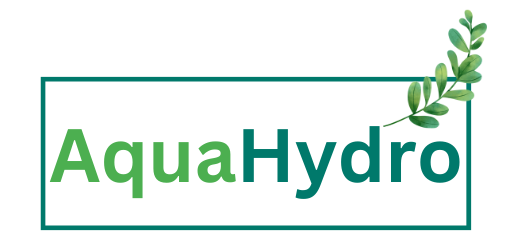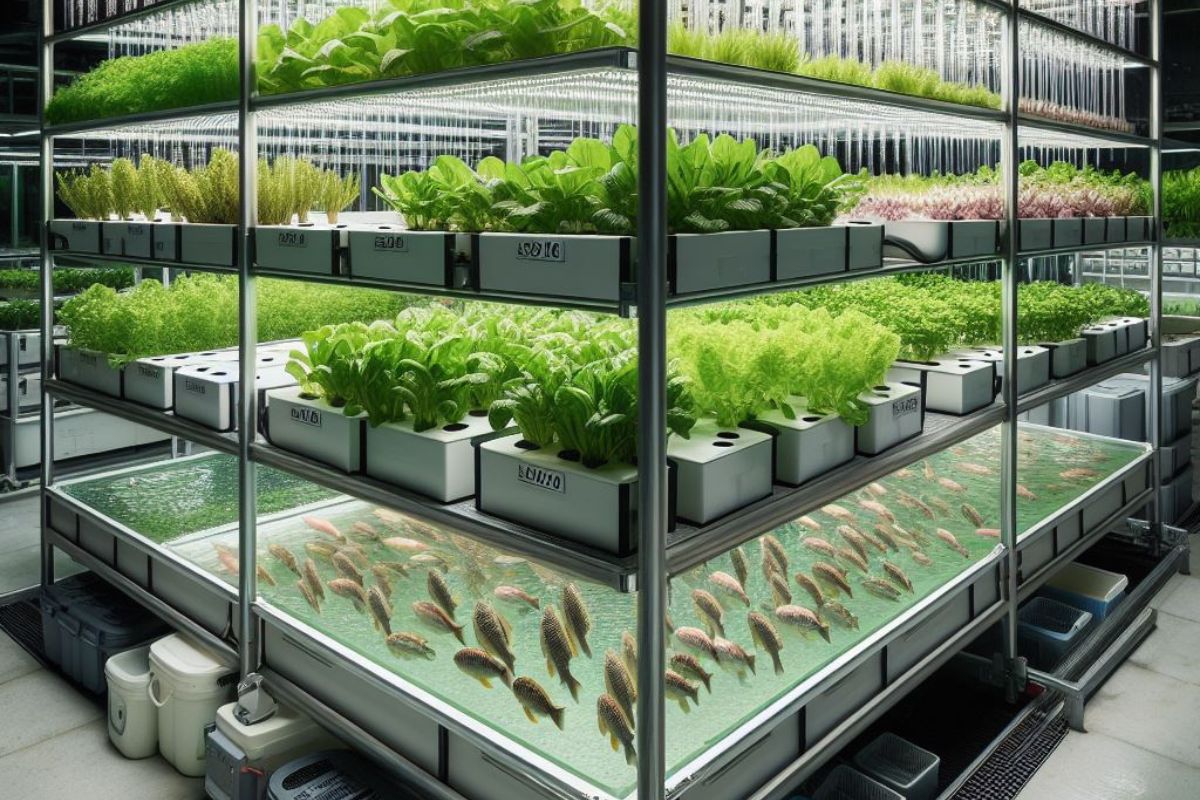Vertical aquaponics systems have emerged as a groundbreaking solution to the challenges of modern agriculture. In a world where sustainable farming practices are becoming increasingly critical, commercial vertical aquaponics systems offer an innovative and efficient way to cultivate crops while minimizing environmental impact.
Introduction
Aquaponics, the integration of aquaculture and hydroponics, has gained popularity for its ability to create a symbiotic relationship between fish and plants. The waste produced by fish becomes a nutrient source for plants, while the plants filter and purify the water, creating a closed-loop ecosystem. This article explores the concept of commercial vertical aquaponics systems and their transformative impact on sustainable agriculture.

Understanding Commercial Vertical Aquaponics Systems
Commercial vertical aquaponics systems represent an innovative evolution of the traditional aquaponics model. Essentially, these systems elevate the standard by introducing vertical stacking mechanisms. This means that farmers can optimize the use of space and enhance crop productivity without the need for horizontal expansion. This approach proves to be particularly beneficial in urban settings where the availability of land is restricted. In summary, commercial vertical aquaponics systems leverage vertical stacking to efficiently utilize space and boost crop yield, making them particularly advantageous in urban environments with limited land resources.
Components of a Commercial Vertical Aquaponics Systems
To set up a successful commercial vertical aquaponics system, it’s essential to understand its key components. Fish tanks, grow beds, and a vertical stacking system form the backbone of this innovative farming method. The vertical stacking system, in particular, allows for efficient use of space, making it feasible for urban and suburban areas.
Fish Tanks:
The fish tank is a crucial component where aquatic animals, typically fish, are raised. These fish provide the nutrient-rich waste that serves as a fertilizer for the plants.
Fish tanks can vary in size and material, but they need to be durable, water-tight, and suitable for the chosen fish species.
Grow Beds:
Grow beds are containers filled with a growing medium (like gravel or expanded clay pebbles) where plants are cultivated. These beds serve as the area where plants extract nutrients from the fish waste through a natural biological process.
Various crops can be grown in these beds, ranging from leafy greens to herbs. The plants help filter and purify the water by absorbing nutrients, making it safe for the fish.
Vertical Stacking System:
The vertical stacking system is a key innovation in aquaponics, allowing for the efficient use of vertical space. This is especially important in urban and suburban settings where horizontal space may be limited.
This system involves stacking multiple layers of grow beds vertically. Gravity helps the water flow from the top beds to the ones below, facilitating a continuous cycle of nutrient-rich water for plant growth.
Water Circulation System:
A well-designed water circulation system ensures the continuous flow of water between the fish tank and the grow beds. It helps in distributing nutrients from the fish waste to the plants and ensures oxygenation for the aquatic life.
Pumps, pipes, and a filtration system are integral parts of the water circulation system. Pumps move water from the fish tank to the grow beds, and filtration systems help remove solids and maintain water quality.
Monitoring and Control Systems:
To maintain optimal conditions for both fish and plants, monitoring and control systems are used. These systems may include sensors for water quality, temperature controllers, and automated feeding systems for the fish.
Automation enhances efficiency by allowing farmers to remotely monitor and adjust parameters, ensuring the stability of the aquaponics environment.
Lighting Systems (Optional):
In indoor or low-light environments, supplemental lighting systems may be employed to support plant growth. This is especially relevant in commercial setups where consistent and high-quality produce is desired year-round.
LED or fluorescent lights are commonly used, providing the necessary light spectrum for photosynthesis.
Setting Up Your Commercial Vertical Aquaponics Systems
Choosing the right location and managing water and nutrient levels are crucial steps in establishing a commercial vertical aquaponics system. Unlike traditional farming, these systems require careful consideration of sunlight exposure, temperature, and water quality. Proper planning at this stage ensures a strong foundation for a thriving aquaponics setup.

Choosing the Right Location:
Consideration of Factors: Selecting an appropriate location is vital for the success of the aquaponics system. Factors such as sunlight exposure, temperature, and water quality need careful consideration.
Sunlight Exposure: Ensure that the chosen location receives sufficient sunlight for plant growth. South-facing areas often receive optimal sunlight, but local climate conditions should also be taken into account.
Temperature: The ambient temperature of the location influences both fish and plant health. Choosing a spot where temperature fluctuations can be controlled or mitigated as needed is essential.
Water Quality: Assess the local water quality as it directly impacts the health of the fish and the effectiveness of the aquaponics system. Consider factors like pH, hardness, and potential contaminants.
Managing Water and Nutrient Levels:
Water Circulation: Establish a well-designed water circulation system to ensure a continuous flow between the fish tanks and grow beds. This facilitates the distribution of nutrients from fish waste to plants and helps maintain oxygen levels for aquatic life.
Monitoring Systems: Implement monitoring systems, including sensors and controllers, to keep track of water quality parameters such as pH, dissolved oxygen, and nutrient levels. Regular monitoring helps prevent imbalances that can affect the overall system health.
Nutrient Cycling: Understand and manage the nutrient cycling process in the aquaponics system. Fish waste provides essential nutrients for plant growth, and efficient nutrient cycling ensures a balanced ecosystem.
Proper Planning:
Foundation for Success: Thorough planning at this stage is crucial for laying a strong foundation for a successful aquaponics setup. Consider the specific requirements of the chosen fish species and the crops you plan to grow.
System Design: Ensure that the vertical stacking system, grow beds, and fish tanks are appropriately designed and sized. Adequate space planning is essential, especially in commercial setups where efficiency is a key consideration.
Create contingency plans: Prepare for possible obstacles by anticipating challenges and establishing contingency plans. This includes backup power sources, emergency water treatment protocols, and strategies for addressing unexpected fluctuations in environmental conditions.
Suitable Fish and Plant Varieties
Selecting the right fish and plants is a critical decision for the success of your vertical aquaponics system. Certain fish species thrive in aquaponic environments, and specific plants adapt well to vertical stacking. Understanding the compatibility of fish and plants ensures a harmonious ecosystem that maximizes productivity.
Benefits of Commercial Vertical Aquaponics
The benefits of adopting a commercial vertical aquaponics system are manifold. Not only does it offer increased yield in limited space, but it also promotes water conservation and sustainability. As global concerns about food security and resource depletion grow, vertical aquaponics emerges as a viable solution to address these challenges.
Challenges and Solutions
While the benefits are compelling, it’s essential to acknowledge and address potential challenges in vertical aquaponics systems. From nutrient imbalances to equipment malfunctions, proactive troubleshooting and regular maintenance are crucial for overcoming obstacles and ensuring a successful harvest.
Case Studies: Successful Implementation
Real-world examples of thriving commercial vertical aquaponics systems provide valuable insights into the feasibility and benefits of this farming method. Examining case studies allows prospective farmers to learn from successful implementations, incorporating best practices into their setups.
Tips for Maintaining Your System
Regular monitoring, adjustments, and preventative measures are key to maintaining a healthy and productive aquaponics system. Tips for addressing common issues, such as nutrient deficiencies or water quality issues, empower farmers to optimize their systems for optimal results.
Regular Monitoring:
Importance: Regular monitoring is crucial for keeping a close eye on the overall health of the aquaponics system.
Parameters to Monitor: Regularly check parameters such as water quality (pH, dissolved oxygen, nutrient levels), plant health, and fish behavior to identify any deviations from the optimal conditions.
Adjustments:
Adapt to Changes: Aquaponics systems may experience fluctuations in environmental conditions. Farmers should be prepared to make necessary adjustments to ensure the continued well-being of both fish and plants.
Temperature and Light: Adjustments might include modifying water temperature, providing supplemental light, or adjusting nutrient levels based on the changing needs of the system.
Preventative Measures:
Anticipate Challenges: Implement preventative measures to anticipate and address potential issues before they become significant problems.
Regular System Checks: Schedule routine system checks to identify and resolve issues early on, preventing escalating problems that could negatively impact the aquaponics ecosystem.
Addressing Nutrient Deficiencies:
Monitoring Plant Health: Keep a close watch on the plants for any signs of nutrient deficiencies, such as yellowing leaves or stunted growth.
Supplementation: If nutrient deficiencies are detected, consider supplementing the system with additional nutrients or adjusting the fish feed to ensure an adequate nutrient supply for plant growth.
Managing Water Quality Issues:
Filtration System Maintenance: Regularly maintain and clean the filtration system to remove solid waste and maintain water quality.
Oxygen Levels: Ensure proper aeration to maintain adequate dissolved oxygen levels for both fish and plants. Inadequate oxygen levels can adversely affect the health of the aquatic life.
Optimizing System for Results:
Continuous Improvement: Embrace a mindset of continuous improvement by regularly assessing the system’s performance.
Experimentation and Innovation: Farmers can experiment with different plant varieties, fish species, or system configurations to optimize productivity and efficiency.
Empower Farmers:
Education and Training: Provide farmers with the knowledge and training needed to effectively maintain and troubleshoot the aquaponics system.
Problem-Solving Skills: Developing problem-solving skills empowers farmers to proactively address challenges and make informed decisions for the well-being of the entire aquaponic ecosystem.
Future Trends in Commercial Vertical Aquaponics
The future of commercial vertical aquaponics holds exciting possibilities, with ongoing technological advancements and the integration of smart farming technologies. Automation, data analytics, and precision farming techniques are poised to revolutionize the efficiency and sustainability of vertical aquaponics.
Economic Viability
For farmers considering the transition to commercial vertical aquaponics, understanding the economic viability is crucial. This section explores the cost-benefit analysis, potential profitability, and the long-term financial sustainability of adopting this innovative farming method.
Community Impact
Beyond economic considerations, commercial vertical aquaponics systems can have a positive impact on local communities. Supporting local economies, educating residents about sustainable agriculture, and involving communities in the farming process contribute to a more resilient and interconnected society.
Environmental Sustainability
Reducing the carbon footprint and preserving biodiversity are inherent benefits of adopting sustainable farming practices. Commercial vertical aquaponics systems play a role in environmental sustainability by minimizing resource usage, limiting pollution, and fostering a healthier ecosystem.
In conclusion, commercial vertical aquaponics systems represent a revolutionary approach to sustainable farming. By maximizing space, minimizing resource usage, and promoting a closed-loop ecosystem, these systems offer a viable solution to the challenges facing modern agriculture. Whether you’re a seasoned farmer or a novice, exploring the potential of commercial vertical aquaponics can lead to a more sustainable and fruitful future.

